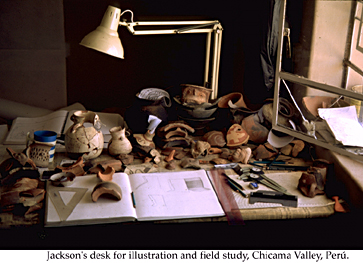MARGARET A. JACKSON, PH.D.



Margaret A. Jackson, Assistant Professor of Art History in the Department of Art and Art History at University of Miami, and Curator of the Pre-Columbian Collection at the Lowe Museum, received her Ph.D. in Precolumbian Art History from the University of California at Los Angeles. Her undergraduate work was done at the Rhode Island School of Design, where she earned a B.F.A. in sculpture. Her primary areas of interest are the ancient arts of the Andes and Mesoamerica, specializing in the imagery and iconography of the Moche of Perú (c. 0 - 800 AD). She has spent considerable time working abroad and in the context of materials research. Her current pursuits focus on the production and maintenance of ideology in elite imagery, art as a catalyst for the creation of social identity and systems of visual notation in the New World.
Statement of Current Research:
"I view the study of ancient art as a viable means to address contemporary issues in pictorial representation and self identity. My research and the courses I teach focus on the art of the ancient Andes, Mexico and Central America. An array of complex issues surround the study of the peoples and regions of Pre-Hispanic America. These include the appropriation and reinterpretation of indigenous artistic traditions, the production and maintenance of ideology in elite imagery, art as a catalyst for the creation of social identity, and alternate systems of visual notation. These larger issues guide my fieldwork, which I do mostly in Peru. I take a broad interdisciplinary approach to my research, combining Art Historical approaches with those of Anthropology, Archaeology, Linguistics and Studio Arts. I am particularly fascinated by the imagery and iconography of the Moche (c. 0 - 800 A.D.), a remarkable culture group from Peru's North Coast, whose physical remains, pyramids and brilliantly colored murals are still found throughout Peru's coastal valleys."